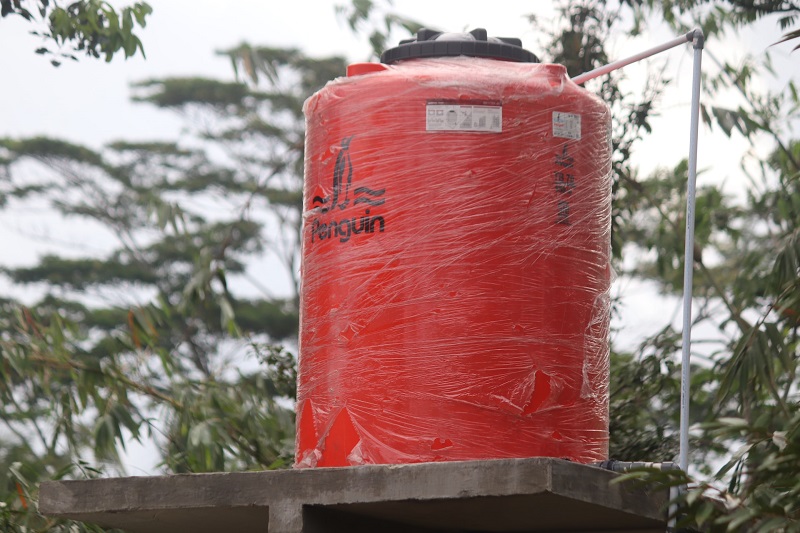Water is an essential resource for life, and its efficient management is crucial for the wellbeing of our planet and its inhabitants. One of the most effective ways to store and manage water is through the use of water tanks. In this article, we will explore the different types of water tanks, their benefits, installation, maintenance, and the future trends and developments in the field of water tanks and sustainable water management.
Here Are Different Types Of Water Tanks
 |
| Water Tanks |
There are various types of water tanks available in the market, each designed for specific purposes and catering to different needs. Some of the most common types include:
- Polyethylene Tanks: These are lightweight, durable, and resistant to corrosion, making them suitable for both above-ground and underground installations. They are also UV-resistant and can withstand extreme temperature fluctuations.
- Steel Tanks: These tanks are strong, durable, and can be customized to fit any shape and size. They are available in both stainless and galvanized steel variants, with the latter being more resistant to rust.
- Concrete Tanks: These tanks are highly durable and can be built above-ground or underground. They are ideal for large-scale water storage and can withstand harsh weather conditions.
- Fiberglass Tanks: These tanks are lightweight, corrosion-resistant, and can be easily installed. They are suitable for above-ground installations and can be customized to fit any shape and size.
Benefits of Water Tanks
Water tanks offer numerous benefits, including:
- Water Conservation: By collecting and storing rainwater or groundwater, water tanks help conserve water and reduce the demand on municipal water supplies.
- Cost Savings: Water tanks can help reduce water bills by providing an alternative source of water for household use, irrigation, and other purposes.
- Environmental Benefits: By reducing the reliance on municipal water supplies, water tanks can help reduce energy consumption and greenhouse gas emissions associated with water treatment and distribution.
- Emergency Preparedness: Water tanks can provide a valuable backup source of water during emergencies, such as natural disasters or water supply disruptions.
Water Tank Installation
Proper installation is crucial to ensure the optimal performance and longevity of a water tank. Some key factors to consider during the installation process include:
- Location: Choose a location that provides easy access for maintenance and is not prone to flooding or other potential hazards.
- Foundation: Ensure that the foundation is level, stable, and can support the weight of the tank when filled with water.
- Overflow and Drainage: Install an overflow outlet and drainage system to prevent waterlogging and damage to the tank and surrounding area.
- Compliance with Local Regulations: Ensure that the installation complies with local building codes and regulations, including obtaining any necessary permits.
Water Tank Maintenance
Regular maintenance is essential to keep water tanks functioning optimally and to extend their lifespan. Some essential maintenance tasks include:
- Inspecting the tank for any signs of damage, such as cracks, leaks, or corrosion.
- Cleaning the tank regularly to remove sediment, algae, and other contaminants.
- Checking and maintaining the tank's components, such as the pump, valves, and filters.
- Ensuring that the overflow and drainage systems are functioning correctly.
Rainwater Harvesting and Water Tanks
Rainwater harvesting is an effective and sustainable method of water management that involves collecting and storing rainwater for later use. Water tanks play a crucial role in rainwater harvesting systems by providing storage for the collected water. Some benefits of rainwater harvesting with water tanks include:
- Reduced reliance on municipal water supplies.
- Lower water bills.
- Improved water quality, as rainwater is often free of chemicals and contaminants found in tap water.
- Reduced environmental impact, as rainwater harvesting reduces the demand for water from natural sources and helps prevent soil erosion and flooding.
Future Trends and Developments in Water Tanks
 |
| Water Tanks |
As the need for sustainable water management solutions continues to grow, the water tank industry is expected to evolve and innovate to meet these challenges. Some trends and developments to watch for include:
- Smart Water Tanks: The integration of smart technology, such as sensors and remote monitoring systems, can help improve the efficiency and functionality of water tanks.
- Green Building Integration: As green building practices become more prevalent, water tanks will likely play a more significant role in sustainable building design, providing water storage for rainwater harvesting, greywater recycling, and other water management strategies.
- Advanced Materials and Design: Continued advancements in materials and design will likely result in more durable, efficient, and aesthetically pleasing water tanks.
Conclusion
Water tanks are essential solutions for sustainable water management, providing numerous benefits, including water conservation, cost savings, and environmental protection. By understanding the different types of water tanks, their installation and maintenance, and the role they play in rainwater harvesting, individuals and communities can make informed decisions about the best water storage solutions for their needs. As the industry continues to innovate and evolve, water tanks will continue to play a crucial role in promoting sustainable water management practices and ensuring a reliable water supply for future generations.

0 comments:
Post a Comment